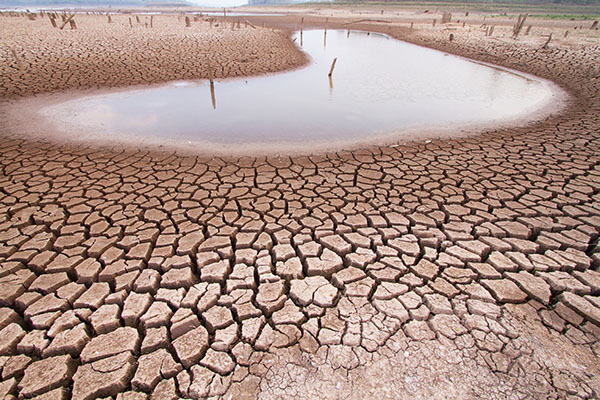
You can also save on your water bill by setting up a rainwater harvesting system. Follow the tips below to avoid five common mistakes people make when harvesting rainwater. (h/t to UKPrepper.life)
Before you buy a container for rainwater, do your research and check the laws in your state. While it is legal in most states to collect rainwater, there are exceptions.
Nevada doesn’t allow harvesting without a water permit. Meanwhile, Colorado is another exception because it doesn’t allow it even in small quantities.
To avoid getting in trouble, contact your local authorities directly to find out if you need to get a permit before setting up your rainwater harvesting system.
Once you've confirmed that you can set up your system, you can harvest rainwater for irrigating your garden during dry weather or washing your car. Keep your rainwater harvesting system separate from the main water supply to avoid contamination.
Keep in mind that harvested rainwater should be treated as non-potable, or water that isn't safe to drink. But when SHTF and you run out of drinking water, harvested rainwater must first be purified before drinking.
If you're worried about incurring added expenses with a new rainwater harvesting system, you can just use a clean and sturdy plastic barrel connected to a drain pipe. But if you have the extra funds, buy a ready-made rainwater tank to connect to your drainpipe.
Here are five common mistakes that you should avoid when setting up a rainwater harvesting system in your homestead.
Miscalculating how much rainwater can be harvested from your house roof
If your house is rather small, it may have a roof area of about 60 square meters. If you experience 80mm of rainfall in one month, your roof would give you around 4,800 liters of water.
If you're only using a small container, it will fill up very quickly. If you have extra space in your homestead, set up several large containers so it's easier to harvest more of the rain water.
Not cleaning gutters regularly
If your gutters aren't cleaned regularly, you would have dirty water flowing into your rainwater container. Make sure you harvest clean rainwater by regularly removing leaves and dirt from your gutters.
You can also fit a gutter guard in the gutter at the top of the drainpipe to trap any leaves that may fall into the gutter. This will make your job easier when it's time to clean the gutters.
Not using the right container for harvesting rainwater
You can use almost any container for harvesting rainwater but if you don't choose the right one, your harvested rainwater might get contaminated.
The container for your rainwater harvesting system should be:
- Dark-colored and opaque – Using a container with a dark-colored interior will help prevent the growth of algae in the water.
- Covered – Using a covered container will help prevent leaves and other debris from falling into the container. It will also keep out insects. Alternatively, you can use a rainwater collection screen that can keep out bird droppings or flies. Get a screen with an aperture of no more than one millimeter to filter out tiny insects like mosquitos.
- Made of food-safe material – If you're going to use harvested rainwater for drinking after SHTF, use a high-quality container made from a food safe material, such as food safe plastic.
Using a container with no outlet
Harvesting rainwater is pointless if you don't know how to get the water out of the container you're using.
While you can use a bucket to get the water from the top of the container, it's easier to have a tap fitted near the bottom of the container.
Once you have your container, get the right tap fitting and install it just above the bottom of the rainwater container. Don't forget to leave a small gap to let any dirt in the water sink below the level of the tap so you get clean water out. (Related: Prepper projects: Setting up a rainwater shower at your homestead.)
Not using a container with overflow
During the rainy season, your rainwater container will quickly fill up.
But if your container doesn’t have an overflow system, the water will reach the top and spill over the edges. The overflow can also push the lid off your container.
Water flowing over the edges of your container might not seem like something you should worry about but if this persists, it can cause water to collect against the wall of your house. This can cause damage in the long run.
Prevent this by fitting an outlet pipe near the top of the container to direct water into another rainwater container or to a drain. If there's extra room, connect several containers so that each one overflows into the next for easier rainwater harvesting.
Before setting up your rainwater harvesting system, check if it's legal to do so in your state. Use the right container with overflow and cover it to keep the harvested rainwater clean.
Go to Homesteading.news for more information on rainwater harvesting systems.
Sources include:
Please contact us for more information.























